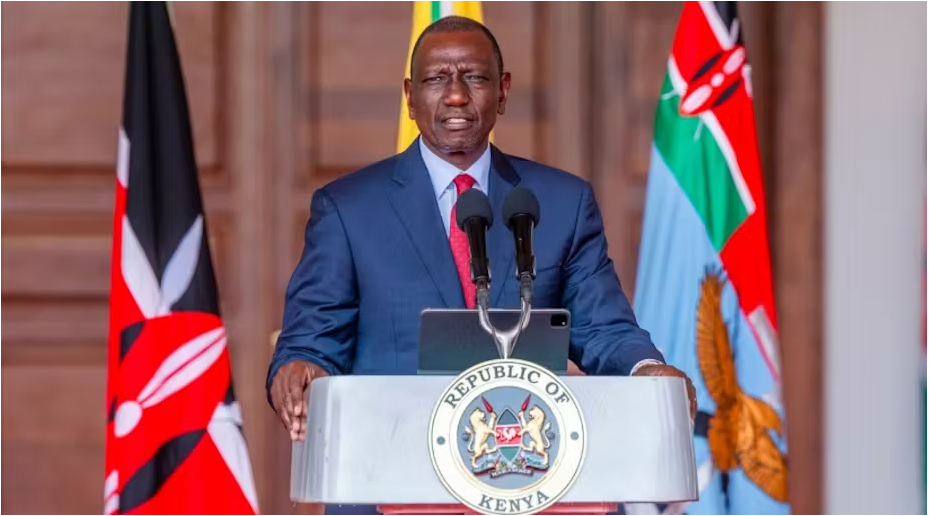Towards a Leaner Government and Prudent Resource Use: Could Kenya Benefit From a Department of Government Efficiency?

The debate on government efficiency has long resonated within global politics, and Elon Musk’s recent remarks about the bloated structure of US federal agencies have ignited fresh interest. Musk’s argument is straightforward: the multiplication of agencies not only burdens taxpayers but creates inefficiency through overlap and redundancy.
As outrageous and radical as this idea seems to be, US President-Elect Donald Trump’s decision to implement it by appointing Elon Musk and Vivek Ramaswamy to lead a Department of Government Efficiency highlights a potential blueprint for trimming government excess. Musk’s stance resonates with similar concerns in Kenya, where an expansive bureaucratic apparatus has been increasingly questioned amid pressing fiscal constraints. Fundamental to quip: Could Kenya benefit from a similar outfit?
Our government structure could best be described as complex and multilayered, encompassing national and county governments alongside numerous parastatals, commissions, and agencies, contributed largely by missed transitional structures into the current devolved set-up and insufficient political will to support the transition into devolution. Painstakingly, legislation or policy framework formulation has contributed to the growth of this bureaucratic network, frequently creating new bodies that consume significant financial resources.
For a country facing mounting debt obligations and fiscal deficits, the sustenance of such a structure may no longer be feasible. Could it be a moment for Kenya to re-evaluate whether a dedicated agency focused on government efficiency could mitigate such challenges and make public administration more sustainable?
One of the primary issues with Kenya’s current system is redundancy. Multiple government agencies often share overlapping mandates, creating scenarios where their functions collide or duplicate efforts. For example, agencies like the National Environment Management Authority (NEMA) and the Water Resources Authority have, at times, experienced overlapping jurisdictional roles. This redundancy not only causes confusion and delays but also strains the government’s fiscal resources. Consolidating or redefining the roles of these entities with a Department of Government Efficiency, counterchecking could create clearer lines of accountability while reducing duplication of efforts.
There is also a compelling argument for optimising government expenditure. According to the International Monetary Fund (IMF), Kenya’s public debt to GDP ratio hovers around 68%, with significant funds channelled toward recurrent expenditure. A substantial portion of this recurrent expenditure is linked to bureaucratic maintenance costs, including salaries, benefits, and operational expenses for government agencies. The Department of Efficiency could spearhead efforts to curtail these costs by recommending mergers or even dissolutions of certain agencies that have a minimal impact on public service delivery.
From a political standpoint, establishing a Department of Efficiency would require navigating Kenya’s intricate political landscape. Political alliances and vested interests often underpin the creation of many parastatals and government agencies, with political leaders using these entities as conduits to reward loyalists. Consequently, such a department would face pushback from influential politicians and government officials whose interests are linked to the status quo. To counter this, the proposed department would need robust political support, potentially secured through public accountability measures that make efficiency reforms transparent and beneficial to citizens.
International examples provide valuable insights into the potential impact of efficiency-centred departments. For instance, the United Kingdom’s Cabinet Office introduced the Efficiency and Reform Group, which successfully reduced government spending by eliminating wasteful expenditures and optimising service delivery. Similarly, Canada’s Treasury Board Secretariat led an overhaul in government operations, yielding budgetary savings without compromising service quality. Kenya could draw lessons from these models to ensure that a Department of Efficiency is not merely a symbolic gesture but a transformative force.

However, the country would need to approach this potential reform with caution. If not carefully structured, the creation of a new department dedicated to efficiency may ironically add to the bureaucracy it seeks to trim. This department would need to be granted clear authority and a defined mandate to identify inefficiencies, suggest actionable reforms, and enforce compliance without unnecessary delays. Without these safeguards, the department could quickly morph into just another government entity competing for scarce fiscal resources, thereby defeating its intended purpose.
The private sector’s experience with efficiency measures also provides valuable lessons for Kenya’s government. Corporations, particularly in industries such as technology and finance, have streamlined their operations by adopting lean management principles, leveraging data analytics, and applying continuous improvement frameworks like Six Sigma. By adopting similar strategies, Kenya’s public sector could become more results-oriented, with an emphasis on measurable outcomes. This would foster a culture where every agency is evaluated on its impact and resource utilisation, ultimately benefiting taxpayers.
Public opinion and political buy-in would be critical for the success of any efficiency-centred department. Kenyans are increasingly aware of the need for prudent use of public resources, and dissatisfaction with government expenditure mismanagement has been a persistent theme in public discourse. A Department of Efficiency could harness this sentiment to rally public support, highlighting how cutting redundant spending can free up funds for essential services like healthcare, education, and infrastructure. Public support would be essential to pressure resistant political forces into embracing reforms.
Another dimension worth exploring is the potential for technological integration within the proposed department. Digital tools such as artificial intelligence (AI) and big data analytics can play a significant role in identifying patterns of inefficiency and forecasting areas where savings can be realised. For instance, AI algorithms could analyse government procurement data to flag overpriced contracts or identify unnecessary purchases. By combining technology with efficient governance practices, the country could improve accountability and ensure that taxpayers’ money is spent wisely.
Nevertheless, implementing such reforms would not be without challenges. Bureaucratic inertia and vested interests could hinder the pace of reform, as the retrenchment of redundant positions or the merger of agencies would inevitably impact various stakeholders. Moreover, the country’s regional diversity means that county governments may have varying levels of readiness and willingness to embrace efficiency reforms. Thus, any proposed Department of Efficiency would need a phased, consultative approach to implementation that respects regional dynamics while pursuing its objectives.
A Department of Efficiency could also enhance Kenya’s standing on the global stage. Efficient governance is often a key indicator for investors, as it signals a government’s commitment to transparent and effective public administration. Kenya has ambitions of becoming a regional economic powerhouse, and the establishment of an efficiency-driven government framework could attract foreign investment by demonstrating fiscal discipline and sound resource management. Moreover, development partners would be more inclined to channel funds into Kenya if they are assured of efficient fund utilisation.
In conclusion, the creation of a Department of Government Efficiency could mark a transformative shift in Kenya’s public administration. By addressing redundancy, optimising expenditure, and leveraging technology, Kenya could foster a leaner and more impactful government structure. However, the success of such a department would depend on its design, authority, and political will to sustain its mandate. If embraced with transparency, a Department of Efficiency could serve as a cornerstone for Kenya’s journey toward prudent governance, ultimately benefiting both the economy and the citizenry. The time has come for Kenya to consider whether a leaner, more efficient government is not just desirable but essential.

